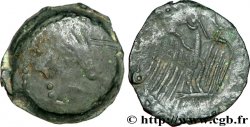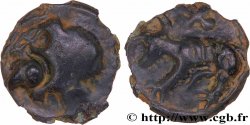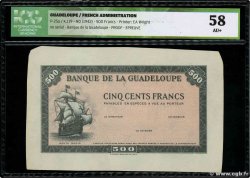Live auction - bga_431720 - GALLIA - CARNUTES (Beauce area) Quart de statère d'or à la cavalière sans bras
You must signin and be an approved bidder to bid, LOGIN TO BID. Accounts are subject to approval and the approval process takes place within 48 hours. Do not wait until the day a sale closes to register. Clicking on "BID" constitutes acceptance of the terms of use of cgb.fr private live auctions.
Bids must be placed in whole Euro amounts only. The sale will start closing at the time stated on the item description; any bids received at the site after the closing time will not be executed. Transmission times may vary and bids could be rejected if you wait until the last second. For further information check the Live auction FAQ
All winning bids are subject to a 18% buyer’s fee.
All winning bids are subject to a 18% buyer’s fee.
| Estimate : | 4 000 € |
| Price : | 4 100 € |
| Maximum bid : | 4 200 € |
| End of the sale : | 13 June 2017 15:15:41 |
| bidders : | 3 bidders |
Type : Quart de statère d'or à la cavalière sans bras
Date: IIe siècle avant J.-C.
Mint name / Town : Chartres (28)
Metal : gold
Diameter : 12,5 mm
Orientation dies : 3 h.
Weight : 2,09 g.
Rarity : R3
Coments on the condition:
Superbe exemplaire sur un flan régulier mais un tout petit peu trop court au revers, avec des types bien centrés. Frappe particulièrement vigoureuse au revers, mais un peu plus molle au droit, avec une rayure sur la joue et de petits coups sur la chevelure et sur la tranche
Catalogue references :
Obverse
Obverse legend : ANÉPIGRAPHE.
Obverse description : Tête à gauche, la chevelure très finement travaillée en petites mèches, l’oreille nettement marquée et le cou orné d’un collier de perles.
Reverse
Reverse legend : LÉGENDE SIMULÉE À L’EXERGUE.
Reverse description : Cheval à gauche, conduit par une cavalière sans bras, mais avec les main marquées ; entre les jambes, un annelet perlé.
Commentary
Bien que cet exemplaire ne corresponde pas exactement au DT. S2077D, il s’insère assez nettement dans la même série. Si ce quart se distingue de celui du Nouvel Atlas et de celui de Zürich par l’absence de la grosse mèche sur la joue, son revers est particulièrement proche du n° 358 de Zürich (sans la longue tige de blé). Une pseudo-légende se devine, en bord de flan sous la ligne d’exergue au revers.
La seule provenance connue pour les monnaies de cette série semble être au sud-ouest d’Etampes (Essone), ce qui coïncide avec une probable attribution aux Carnutes..
Although this example does not correspond exactly to DT. S2077D, it fits quite clearly into the same series. If this quarter is distinguished from that of the New Atlas and that of Zurich by the absence of the large lock of hair on the cheek, its reverse is particularly close to n° 358 of Zurich (without the long stalk of wheat). A pseudo-legend can be seen, on the edge of the flan under the exergue line on the reverse. The only known provenance for the coins of this series seems to be southwest of Etampes (Essone), which coincides with a probable attribution to the Carnutes.
La seule provenance connue pour les monnaies de cette série semble être au sud-ouest d’Etampes (Essone), ce qui coïncide avec une probable attribution aux Carnutes..
Although this example does not correspond exactly to DT. S2077D, it fits quite clearly into the same series. If this quarter is distinguished from that of the New Atlas and that of Zurich by the absence of the large lock of hair on the cheek, its reverse is particularly close to n° 358 of Zurich (without the long stalk of wheat). A pseudo-legend can be seen, on the edge of the flan under the exergue line on the reverse. The only known provenance for the coins of this series seems to be southwest of Etampes (Essone), which coincides with a probable attribution to the Carnutes.







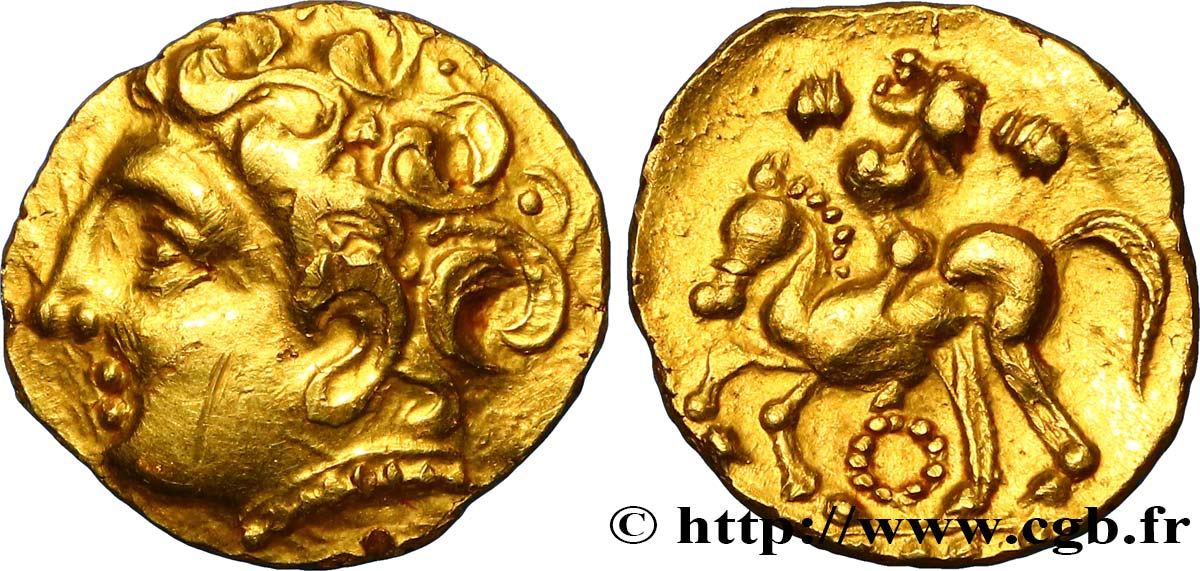
 Report a mistake
Report a mistake Print the page
Print the page Share my selection
Share my selection Ask a question
Ask a question Consign / sell
Consign / sell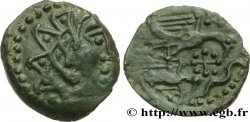
 Full data
Full data

